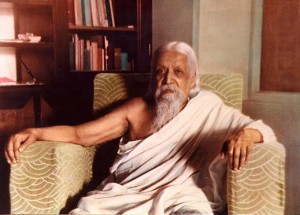
We have often heard of the term ‘Hostile Forces’ when pursuing the path of Yoga. Some may tend to glamourise and give their imagination complete freedom in trying to comprehend these entities and that too can be dangerous if one is sincerely trying to follow the path and do away with their influence. What are the different kinds of Asuras and what is the role played by them – here is what Sri Aurobindo tells us.
There are two kinds of Asuras—one kind were divine in their origin but have fallen from their divinity by self-will and opposition to the intention of the Divine: they are spoken of in the Hindu scriptures as the former or earlier gods; these can be converted and their conversion is indeed necessary for the ultimate purposes of the universe. But the ordinary Asura is not of this character, is not an evolutionary but a typal being and represents a fixed principle of the creation which does not evolve or change and is not intended to do so. These Asuras, as also the other hostile beings, Rakshasas, Pishachas and others resemble the devils of the Christian tradition and oppose the divine intention and evolutionary purpose in the human being: they don’t change the purpose in them for which they exist which is evil, but have to be destroyed like the evil. The Asura has no soul, no psychic being which has to evolve to a higher state; he has only an ego and usually a very powerful ego; he has a mind, sometimes even a highly intellectualised mind; but the basis of his thinking and feeling is vital and not mental, at the service of his desire and not of truth. He is a formation assumed by the life-principle for a particular kind of work and not a divine formation or a soul.
*
The Asuras and Rakshasas etc. do not belong to the earth, but to supraphysical worlds; but they act upon the earth-life and dispute the control of human life and character and action with the Gods. They are the Powers of Darkness combating the Powers of Light. Sometimes they possess men in order to act through them, sometimes they take birth in a human body. When their use in the play is over, they will either change or disappear or no longer seek to intervene in the earth-play.
*
The Asuras are really the dark side of the mental, or more strictly, of the vital mind plane. This mind is the very field of the Asuras. Their main characteristic is egoistic strength and struggle, which refuse the higher law. The Asura has self-control, tapas and intelligence, but all that for the sake of his ego. On the lower vital plane the corresponding forces we call the Rakshasas which represent violent passions and influences. There are also other kinds of beings on the vital plane which are called the Pishachas and Pramathas. They manifest more or less in the physico-vital.
On the physical plane the corresponding forces are obscure beings, more forces than beings, what the Theosophists call the elementals. They are not strongly individualised beings like the Rakshasas and Asuras, but ignorant and obscure forces working in the subtle physical plane. What we in Sanskrit call the Bhutas mostly come under this class. But there are two kinds of elementals, the one mischievous and the other not. There are no Asuras on the higher planes where the Truth prevails, except in the Vedic sense—“the Divine in its strength”. The mental and vital Asuras are only a deviation of that power.
*
Yes, some kinds of Asuras are very religious, very fanatical about their religion, very strict about rules of ethical conduct. Others of course are just the opposite. There are others who use spiritual ideas without believing in them to give a perverted twist and delude the sadhak. It is what Shakespeare described as the Devil quoting scripture for his own purpose. At present what they are most doing is to try to raise up the obscurity and weakness of the most physical mind, vital, material parts to prevent the progress or fulfilment of the sadhana.
*
As to Asuras, not many of them have shown signs of repentance or possibility of conversion up to now. It is not surprising that they should be powerful in a world of ignorance for they have only to persuade people to follow the established bent of their lower nature, while the Divine calls always for a change of nature. It is not to be wondered at that the Asura has an easier task and more momentary success in his combinations. But that temporary success does not bind the future.
Sri Aurobindo





